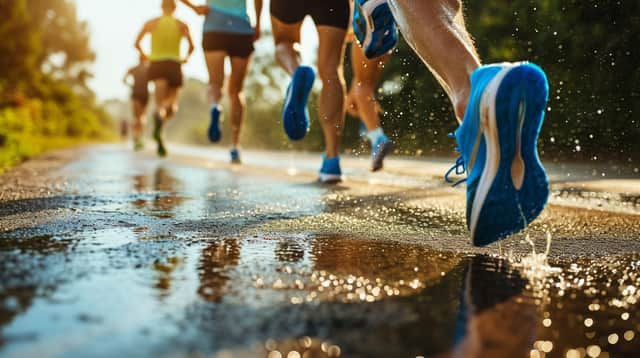Dr's Casebook: The different pathways to produce energy when you exercise


Dr Keith Souter writes: It started in the courtyard at Warwick and went through beautiful countryside to the courtyard of Kenilworth. I had been training for it for several weeks.
If you are aiming to increase your fitness in any sport it helps to understand how you burn energy. You see, your body uses three energy systems when you exercise. The type of exercise you are doing will favour one system over another.
Advertisement
Hide AdAdvertisement
Hide AdIf you are doing high-intensity exercise your body will tap into energy pathways that don’t require oxygen. On the other hand if you are doing endurance exercise like long distance running the body will depend more on oxygen requiring or aerobic energy pathways.
The first energy system used by muscle cells when you start a high intensity exercise is the phosphagen system. This doesn’t need oxygen, but uses up a chemical called adenosine triphosphate, or ATP. You use all of that ATP up in the first ten to 15 seconds. So it is the sprinter’s pathway. Think of it as being like a match, it flares and gives intense light and energy until it is used up.
The next to be used is the glycolytic pathway, again which doesn’t use oxygen, so it is also anaerobic. It used blood glucose and muscle and liver glycogen stores to produce more ATP. This gives about another 30 seconds to three minutes to produce more ATP in high intensity exercise. Once this ATP is all used up lactic acid is produced, so the muscles fatigue, burn and make you stop. Think of this as being like a paper burning. It does so quickly, but will soon burn out.
For more sustained activity the oxidative pathway is used to produce energy. This needs oxygen so is called aerobic. It utilises blood glucose, muscle and liver glycogen stores and also fatty acids from body and muscle fat. Think of this as being the slow burning of wood in a fire.
I very much needed that smouldering wood fire of the oxidative pathway.